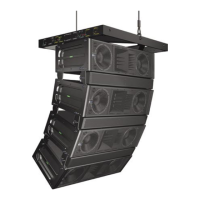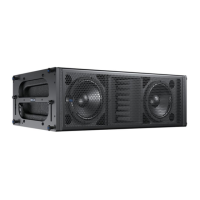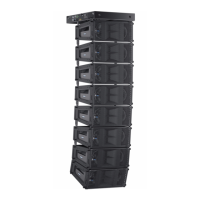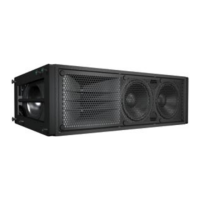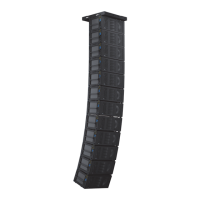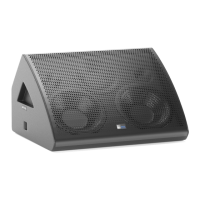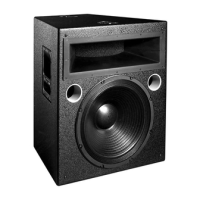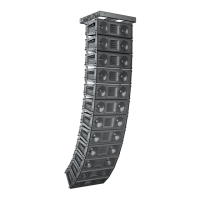5
CHAPTER 1
Self-powered and highly mobile, MILO is advanced
loudspeaker technology with equally advanced power
capabilities. Understanding MILO’s power distribution,
voltage and current requirements, as well as electrical
safety issues, is critical to the safe and correct operation
and deployment of MILO.
AC POWER
When AC power is applied to the MILO loudspeaker,
the Intelligent AC power supply automatically selects
the correct operating voltage, allowing MILO to be used
internationally without manually setting voltage switches.
The Intelligent AC power supply performs the following
protective functions to compensate for hostile conditions on
the AC mains:
Suppresses high-voltage transients up to several
kilovolts
Filters common mode and differential mode radio
frequencies (EMI)
Sustains operation temporarily during low-voltage
periods
Provides soft-start power-up, eliminating high inrush
current
VOLTAGE REQUIREMENTS
The MILO loudspeaker operates safely and without audio
discontinuity if the AC voltage stays within either of two
operating windows at 50 or 60 Hz:
85 to 134 volts
165 to 264 volts
MILO can withstand continuous voltages up to 275 volts
and allows any combination of voltage to GND (that is
neutral-line-ground or line-line-ground).
CAUTION: Continuous voltages higher than
275 volts can damage the unit.
TIP: Since MILO does not require a
dedicated Neutral, and it can tolerate
elevated voltages from ground, it can be connected
between Line-Line terminals in a 120 V 3-phase
Wye system. This results in 208 V AC betweens
lines (nominal) and will therefore draw less current
for the same output power compared to operating
MILO from 120 V AC (Line- Neutral). Make sure
that the voltage remains within MILO’s recommend
operating window (180 V AC to 250 V AC). The
Ground terminal must always be used for safety and
the Line to Ground voltage should never exceed 250
V AC (typically there will be 120 V AC from Line to
Ground in the above example).
MILO uses a NEMA L6-20P, an IEC 309 male power
connector or a multipin VEAM connector and complies with
worldwide product safety standards.
AC POWER DISTRIBUTION
All amplier modules and directly associated audio
equipment (mixing consoles, processors, etc.) must be
properly connected to the AC power distribution, preserving
AC line polarity and connecting earth ground such that
all grounding points are connected to a single node or
common point using the same cable gauge as the neutral
and line(s) cable(s).
Improper grounding connections between loudspeakers
and the rest of the audio system may produce noise, hum
and/or serious damage to the input/output stages in the
system’s electronic equipment.
CAUTION: Before applying AC to any Meyer
Sound self-powered loudspeaker, be sure
that the voltage potential difference between neutral
and earth ground is less than 5 V AC.
Figure 1.1 shows a sample three-phase AC distribution
system, with the load between loudspeakers distributed
among the three phases and all of the loudspeakers
connected to common neutral and earth ground points.
Figure 1.1: A sample AC power distribution block diagram
CHAPTER 1: POWER REQUIREMENTS
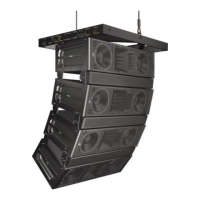
